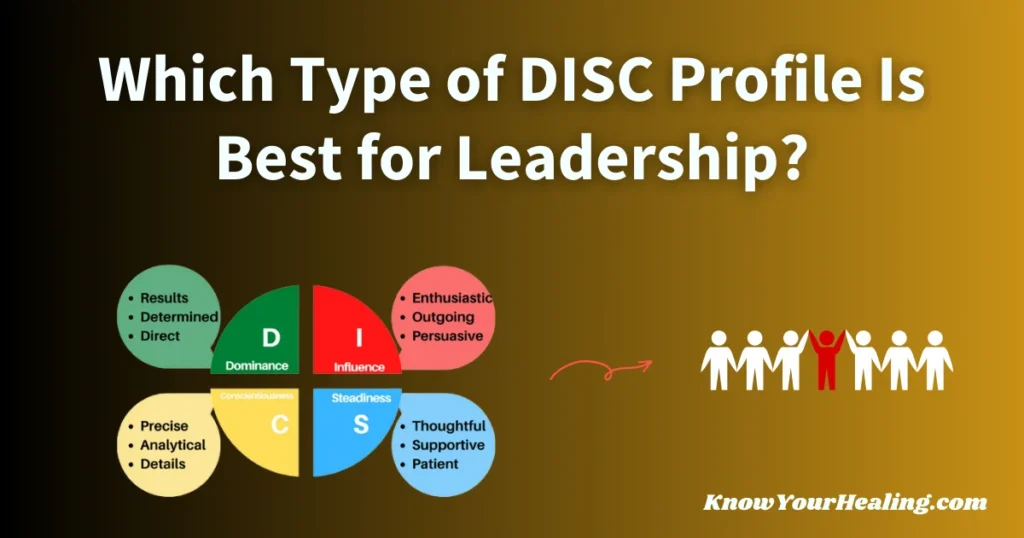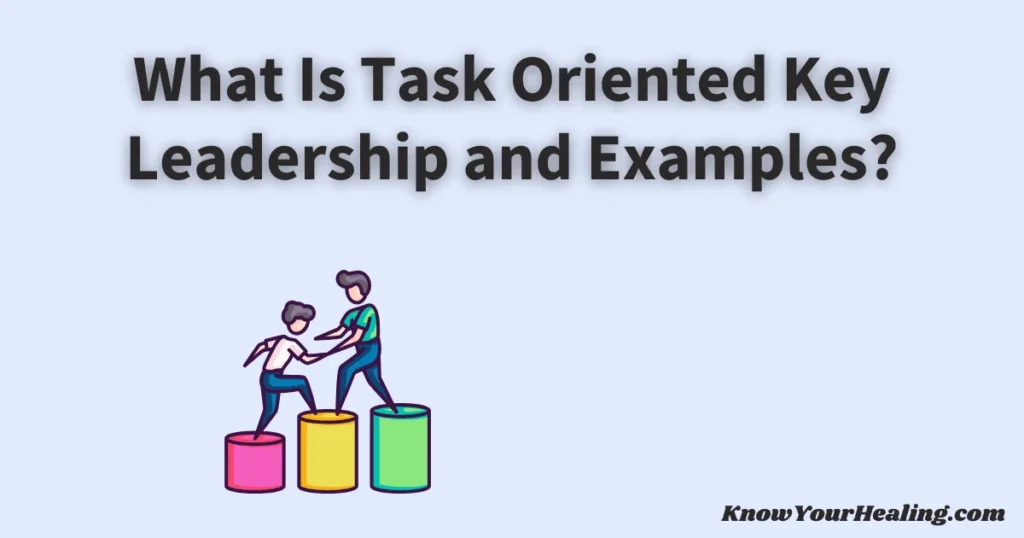Leadership retreat ideas can transform how teams function by providing a unique environment for growth and connection. Creating a well-structured leadership retreat is essential to strengthen your team’s bond and boost morale.
These retreats include diverse activities, such as skill-building sessions and wellness exercises, that promote professional development and personal well-being.
Leadership retreats allow leaders and team members to step outside their daily routines and engage in activities that encourage collaboration and innovation.
For instance, engaging in outdoor adventures or team-building games promotes communication and strategic thinking among participants.
Take a moment to consider incorporating mindfulness exercises for relaxation and focus.
The benefits of a well-planned leadership retreat extend beyond team-building. They can spark new ideas and foster a sense of community among participants.
Incorporating elements like welcoming parties and community service can inspire genuine connections and a shared sense of purpose.
By choosing the right activities, these retreats can be powerful tools for creating lasting change and growth within your team.
Essential Objectives for Leadership Retreats

Retreats that focus on essential objectives greatly benefit leadership team members. They promote teamwork, leadership roles, and strategic planning, fostering personal growth and professional development.
Clear Objectives: It is crucial to set clear and specific goals. These goals guide the activities and discussions, ensuring that every leader can focus on ideas that align with the team’s needs.
This structured approach allows participants to gain the most from the experience.
Team Building: Integrating team-building activities such as scavenger hunts and outdoor activities helps strengthen relationships among team members.
These activities are a great way to boost morale and create a more cohesive team dynamic. They also encourage creative thinking and problem-solving skills.
Skill Development: Leadership retreats should include skill-building sessions to enhance essential leadership skills like communication and strategic thinking.
These sessions offer leaders a unique opportunity to develop new skills that will contribute to their growth and the team’s success.
Wellness Activities: Incorporating wellness activities is essential for maintaining participants’ mental health and focus.
These activities, such as yoga or guided meditation, provide a relaxed atmosphere where leaders can recharge and reflect.
External Speakers and Workshops: Bringing in external speakers or hosting workshops facilitates fresh perspectives and innovative ideas.
Such interactions with industry leaders can inspire team members and provide valuable insights.
Selecting the Venue
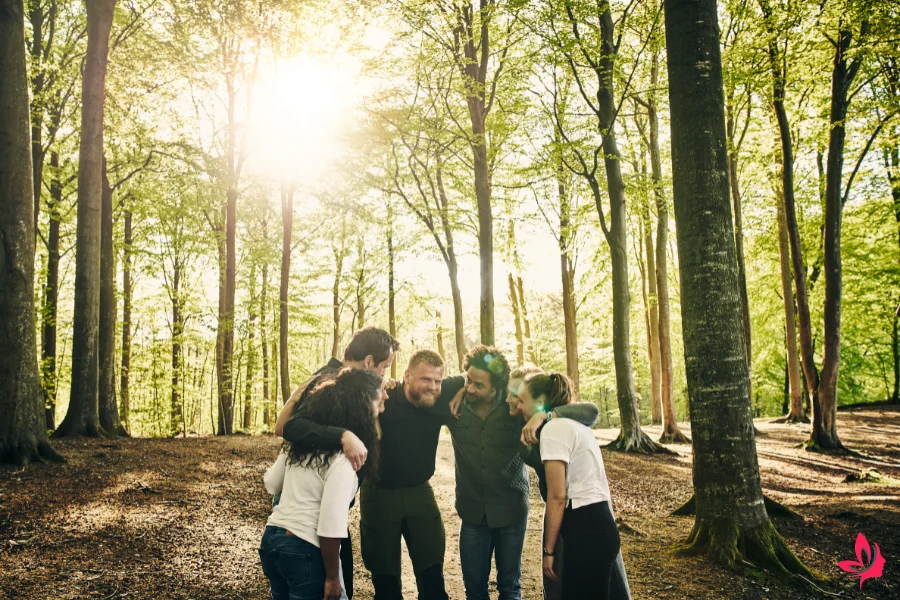
Selecting the perfect venue can make or break a leadership retreat experience. Important considerations include choosing between outdoor and indoor settings, ensuring accessibility and suitable accommodations, and deciding whether to hold the retreat on-site or off-site.
Outdoor vs. Indoor
Choosing between an outdoor and indoor venue is crucial to the retreat’s success.
Outdoor locations like parks or campgrounds can boost team bonding and offer unique opportunities for scavenger hunts or other team-building activities.
These environments often encourage team members to develop problem-solving skills and interpersonal relationships.
Indoor venues, such as hotels or conference centers, provide the necessary infrastructure for dedicated spaces that support strategic planning and skill development.
Indoor settings offer comfort and stability, including meeting rooms and accommodations. Both options have benefits depending on the retreat’s specific goals and activities.
Accessibility and Accommodations
Accessibility is vital to ensure that every team member can participate fully. Choose a venue that is easily accessible for all attendees.
Consider special accommodations that may be required, such as wheelchair access or dietary needs, to create an inclusive environment.
Having nearby amenities is also a key factor in decision-making.
For instance, venues with onsite accommodations reduce the hassle of transportation logistics and keep the whole team together, fostering stronger relationships and enhancing team spirit.
On-Site vs. Off-Site
Choosing between an on-site and off-site venue involves various factors.
An off-site location can offer a fresh perspective and is often the best way to inspire creativity and innovative ideas among the leadership team.
It encourages team members to think outside their usual environments, promoting new skills and personal growth.
An on-site venue, typically at the company office, might be a more cost-effective option and could facilitate last-minute changes in the retreat agenda.
This choice supports flexibility in planning, allowing companies to adapt quickly to meet their specific needs.
35 Inspiring Leadership Retreat Ideas and Activities
Strategic Focus & Leadership Development
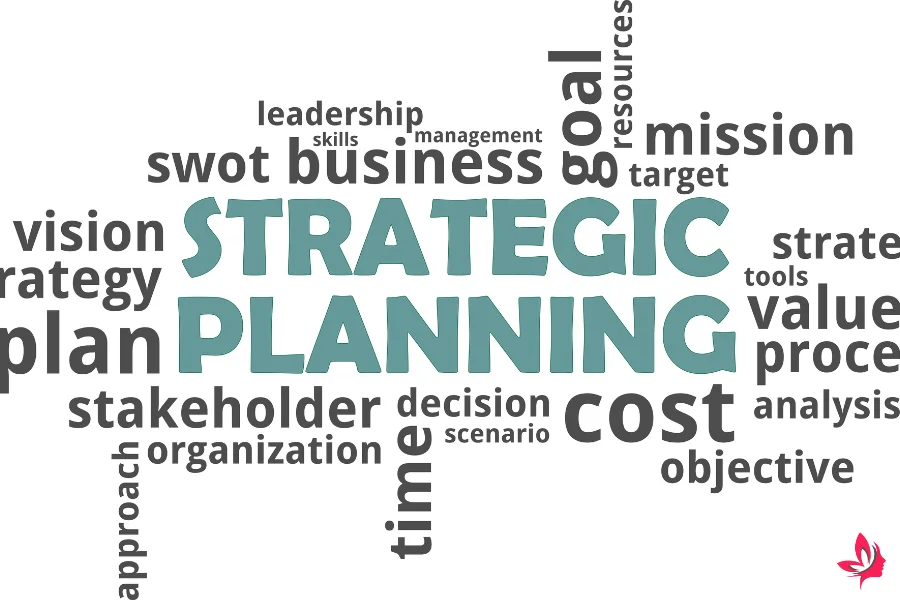
These activities focus on long-term goals, enhancing leadership skills, and fostering strategic thinking.
1. Strategic Planning Sessions: Kick off your retreat with strategic planning sessions. Align your leadership team with clear objectives, develop action plans, and define a common goal for the coming year. Review past performance, brainstorm innovative ideas, and engage in strategic thinking to ensure long-term success.
2. Executive Retreats: Tailor retreats for senior leaders and the executive team. Focus on high-level strategic challenges, long-term vision, and in-depth analysis of critical issues. This provides a dedicated space for top leaders to collaborate and develop innovative solutions.
3. Skill-Building Sessions: Focus on professional development with skill-building sessions that target critical thinking, time management, negotiation, and public speaking. Skill development is crucial for your team members’ personal growth and your organization’s overall success.
4. Creative Thinking Workshops: Use creative thinking workshops to spark innovative ideas, help your team members develop new creative thinking skills, and generate innovative solutions to existing challenges. Use design sprints, brainstorming sessions, or other creative techniques.
5. Communication Skills Training: Targeted training sessions will enhance your team’s communication skills. Effective communication is a key component of effective leadership. Focus on active listening, clear articulation, and constructive feedback.
6. Problem-Solving Skills Exercises: Develop problem-solving skills through interactive exercises. Improve your team’s ability to tackle complex challenges. Use case studies, simulations, or real-world scenarios.
7. Emotional Intelligence Development: Focus on emotional intelligence development through workshops and discussions. This is essential for building stronger interpersonal relationships and fostering a positive work environment.
8. Industry Best Practices Discussions: Facilitate discussions on industry best practices. Stay ahead of the curve and foster continuous improvement. Learn about the latest trends and innovations in your industry.
9. Past Year Review & Future Planning: Dedicate time for a review of the past year and planning for the future. Reflect on past successes and challenges and identify areas for growth and improvement.
10. Skill Development for Top Leaders: Focus on skill development for your top leaders. This might include executive coaching, leadership assessments, or specialized training programs.
11. Executive Team Retreat: Plan a retreat for your executive team to address high-level strategic issues. Focus on long-term vision, strategic planning, and organizational development.
12. Fresh Ideas Generation: Create a dedicated space for generating fresh ideas. Foster innovation through brainstorming sessions, design thinking workshops, or simply providing a relaxed and inspiring environment.
13. Best Ideas Implementation Planning: Dedicate time to implementing the best ideas generated during the retreat. Develop action plans, assign responsibilities, and set timelines.
14. Time Management Workshops: Improve your team’s time management skills. Time management is a valuable skill for any leader. Focus on prioritizing tasks, managing distractions, and setting realistic deadlines.
15. Critical Thinking Development: Through targeted workshops and exercises, develop critical thinking skills and enhance your team’s ability to analyze information, evaluate arguments, and make sound judgments.
Team Building & Cohesion
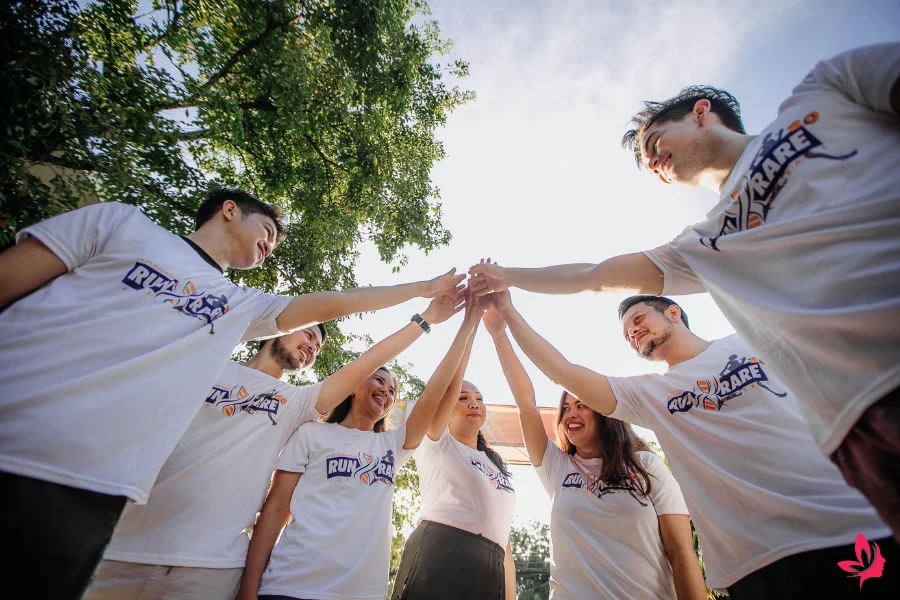
These activities strengthen relationships, improve communication, and foster teamwork.
16. Team Building Activities: Engage in team-building activities like escape rooms, ropes courses, or scavenger hunts. Encourage collaboration, communication, and problem-solving skills in a fun and engaging way.
17. Icebreaker Games: Start your retreat with icebreaker games. These games encourage interaction and create a positive impact from the beginning. They also help team members feel more comfortable and encourage open dialogue.
18. Design Sprints: Implement design sprints to tackle specific business challenges. In a short amount of time, generate new ideas and develop prototypes.
19. Cooking Classes: Hold cooking classes with your team. This will encourage team bonding and collaboration in a relaxed and informal setting.
20. Local Community Involvement: Give back to the community through volunteer activities. Strengthen team spirit and make a positive impact.
21. Team Retreat at a Resort: Host your team retreat at a resort. Provide a relaxed and inspiring environment for your team members.
22. Offsite Retreat: Choose an offsite retreat location to remove your team from their daily work environment. Encourage fresh ideas and focused discussions.
23. Team Bonding Activities: Prioritize team bonding activities to strengthen relationships and create a strong team.
24. Open Dialogue Sessions: Facilitate open dialogue sessions to encourage communication and feedback and build trust and understanding.
25. Team Cohesion Activities: Prioritize team cohesion activities to build a strong team, foster a sense of belonging, and create a supportive team environment.
26. Interpersonal Relationships Development: Focus on developing strong interpersonal relationships within your team.
27. Employee Engagement Activities: Incorporate employee engagement activities to boost morale and positively impact your retreat.
28. Conflict Resolution Training: Equip your team with conflict resolution skills through targeted training sessions.
Well-being & Personal Growth

These activities focus on individual well-being, personal development, and creating a positive retreat experience.
29. Wellness Activities: Prioritize your team members’ mental health and well-being with wellness activities like yoga, meditation, or spa treatments.
30. Church Leadership Retreats: Organize church leadership retreats to focus on spiritual growth and leadership development within faith-based organizations.
31. Management Teams Retreat: This retreat focuses specifically on the needs of management teams and includes targeted sessions on leadership roles and responsibilities.
32. Retreat Experience Enhancement: Choose a relaxing and inspiring retreat location. Consider incorporating elements that enhance the overall retreat experience, such as comfortable accommodations, delicious meals, and opportunities for relaxation.
33. Wellness Activities (Mental Health Focus): Prioritize activities that support mental health, such as mindfulness exercises, stress management workshops, or access to mental health resources.
34. Personal Development Workshops: Offer workshops focused on personal development topics such as self-awareness, emotional intelligence, or work-life balance.
35. Creative Ideas Generation Sessions (Personal Growth Angle): While creative idea generation can be strategic, it offers a unique opportunity for personal growth and development by tapping into individual creativity and fostering innovative thinking.
Keynote and Guest Speakers

Including keynote and guest speakers at a leadership retreat is a great way to give team members insights and inspiration. These sessions can improve leadership skills, enhance team dynamics, and play a crucial role in professional development.
Industry Experts
Industry experts offer a unique opportunity for leadership teams to gain insights into current trends and strategies.
These speakers can address specific goals, such as enhancing strategic thinking or introducing innovative solutions for an executive retreat.
Industry leaders often bring fresh ideas and strategic plans that align with corporate objectives.
Hosting an expert in your field ensures the information is directly relevant, providing a strong foundation for better results.
This session can be a great opportunity for team leaders to learn from someone who has practical, real-world experience applying new ideas.
Motivational Speakers
Motivational speakers can inspire team spirit and enthusiasm among participants.
They are a good idea for encouraging interpersonal relationships and a high-performing team culture.
These sessions can focus on personal growth, communication skills, and emotional intelligence.
Engaging a compelling speaker who can share cutting-edge leadership development ideas can lead to stronger relationships within management teams.
Their stories and experiences often serve as excellent opportunities for team bonding and can help break down barriers between team members at the next leadership retreat.
Motivational talks can invigorate the retreat experience, leaving attendees with renewed energy to tackle the coming year.
Leadership Coaches
Leadership coaches are essential for developing leadership skills and enhancing team dynamics through interactive sessions.
They provide skill-building sessions tailored to specific needs, focusing on critical thinking, conflict resolution, and time management.
Coaches can guide small groups in team-building activities, offering a relaxed atmosphere for open dialogue and practical problem-solving skills.
These sessions are well-suited for team members looking to improve their leadership skills. They give them the tools to lead effectively in today’s challenging environment.
Team-Building Activities
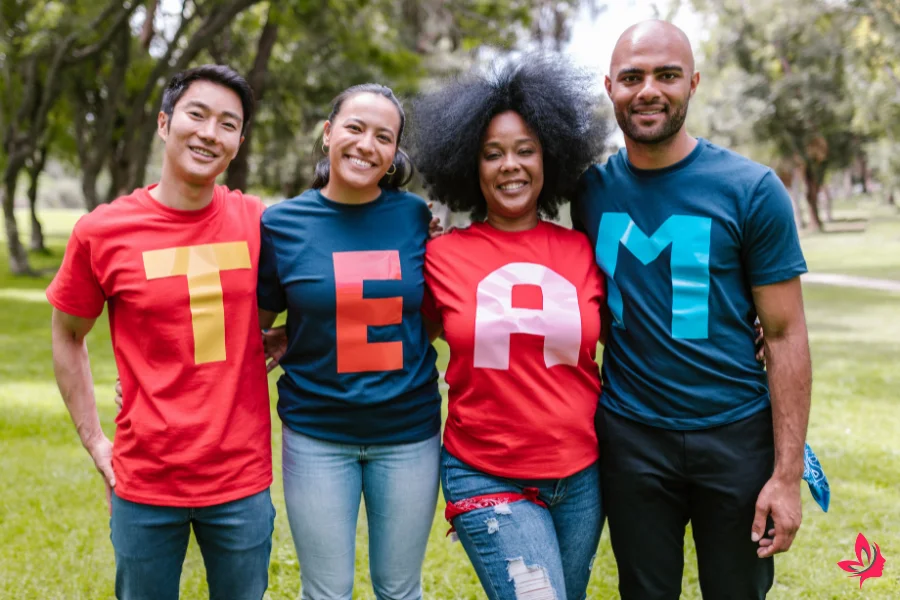
Team-building activities are a great way to enhance leadership skills and strengthen relationships among team members during a leadership retreat. Participates in focused challenges develop problem-solving skills and strategic thinking and improve communication, contributing to effective leadership.
Problem-Solving Challenges
Problem-solving challenges are designed to foster critical thinking and coordination.
One popular idea involves a scavenger hunt encouraging strategic planning, teamwork, and creative problem-solving.
Participants must work together to find clues and complete tasks within a set amount of time.
Another effective activity is an escape room challenge, in which small groups must solve puzzles to “escape” a room within a limited timeframe.
Such challenges enhance team interpersonal relationships and communication skills, which are crucial for leadership development.
Physical Team Challenges
Physical team challenges include activities that promote cooperation and trust.
Obstacle courses, for example, require participants to guide each other through physical challenges, building trust and reliance on each other’s strengths.
Another engaging idea is a tug-of-war competition that enhances group dynamics and leadership roles as team leaders strategize and motivate their teams.
These activities are fun ways to relax and help develop essential leadership skills, such as negotiation and team cohesion.
Creative Workshops
Creative workshops allow teams to explore innovative ideas and engage in skill development.
Art or design workshops let team members express creative thinking, encouraging a relaxed atmosphere while boosting team spirit.
Cooking classes are another great opportunity for team-building.
Participants must work together to create a meal, emphasizing collaboration and planning.
These workshops can lead to new ideas and skills, fostering personal growth and stronger relationships among management teams.
Personal Development Sessions
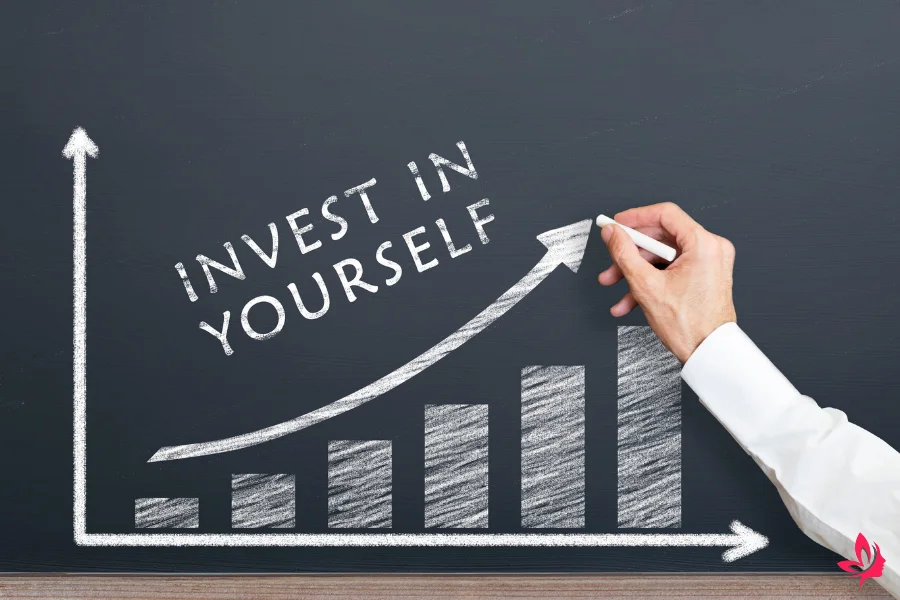
Personal development sessions at a leadership retreat offer transformative growth opportunities. These activities focus on enhancing leadership skills, promoting mindfulness, and providing personalized coaching.
Participants gain valuable insights and practical skills, leading to a positive impact on their leadership roles.
Leadership Skill Workshops
Leadership skill workshops are a great way to equip team members with essential leadership skills.
These workshops often involve interactive sessions focusing on skill-building exercises such as strategic planning, communication, and problem-solving.
Small groups encourage open dialogue and collaboration, making it easier for participants to exchange ideas and learn from one another.
Participants can improve their emotional intelligence and strengthen their leadership capabilities by engaging in these workshops.
These sessions are often led by industry leaders or external speakers who bring innovative ideas and real-world experiences. This ensures that team leaders can effectively apply these skills in their roles.
Mindfulness and Well-being
Incorporating mindfulness and well-being activities into a leadership retreat is a good idea for fostering a relaxed atmosphere.
These activities can include yoga sessions, meditation, and wellness activities that help reduce stress and enhance focus.
They allow participants to recharge and reflect, leading to better performance and decision-making.
Mindfulness practices are particularly beneficial for improving mental health and promoting balance and calm.
By prioritizing well-being, leadership teams demonstrate a commitment to holistic development. They ensure that their leaders are well-rounded and ready to tackle challenges with a clear mind.
One-on-One Coaching
One-on-one coaching offers a unique opportunity for personal growth and tailored development during a corporate retreat.
These sessions provide leadership team members personalized feedback and guidance from experienced coaches.
Participants can work on specific goals, making it an excellent time for introspection and actionable growth strategies.
Through dedicated space for one-on-one interactions, team leaders can develop interpersonal relationships and explore individual leadership styles.
Coaching sessions address specific needs, such as time management or communication skills. They enable leaders to return to their roles with a renewed focus and a plan for future success.
Final Thoughts
Leadership retreat ideas bring teams together and foster a strong sense of collaboration and innovation. These gatherings provide a unique opportunity to step away from daily routines and focus on team goals and personal development.
Including activities that enhance communication and creativity is key to a successful retreat.
Strategic planning sessions, team-building games, and wellness activities are favorites for many organizations.
Another popular choice is outdoor adventures, which boosts energy and teamwork. These experiences help participants relax and connect in a natural setting, creating memorable bonds.
Key Takeaways:
- Encourage Communication: Activities promoting open discussion help develop strong leadership skills.
- Foster Creativity: Creative workshops and brainstorming sessions spark new ideas and solutions.
- Support Team Bonding: Fun activities and adventures bring team members closer together.
- Align Goals: Use sessions to ensure everyone is aligned with the organization’s vision.
Frequently Asked Questions
Leadership retreats focus on team building, setting productive agendas, and engaging activities. Effective retreats involve structured programs that foster collaboration, creativity, and leadership skills.
How do you structure a leadership retreat?
Setting clear objectives is key to structuring a leadership retreat.
The process starts with opening sessions to outline goals, followed by activities like workshops and team-building exercises. Closure with feedback sessions ensures objectives are met.
What does a leadership retreat look like?
Leadership retreats often take place in settings away from the usual work environment. They include workshops, discussions, and recreational activities to encourage relaxation and open communication. Typically, they aim to foster team connections.
What is the goal of a leadership retreat?
Retreats aim to strengthen leadership abilities and team cohesion. They encourage participants to reflect on their roles and improve their interpersonal skills. Retreats also seek to align the team with the organization’s vision.
How do you make a retreat fun?
Incorporate engaging activities like outdoor challenges or creative workshops.
Ensure that downtime is included so that team members can socialize and unwind. Fun elements help build camaraderie and make the retreat memorable.
What makes a retreat successful?
A successful retreat has a clear agenda, engaging facilitators, and relevant activities.
Good organization and participant feedback are key components. It should achieve its set goals and leave attendees feeling motivated.
How do you plan a creative retreat?
Creativity can be fostered by incorporating unique activities and varied formats.
Encourage brainstorming sessions and provide spaces that inspire innovation. Diverse workshop topics and hands-on activities can spur creative thinking.
What is the role of a retreat leader?
A retreat leader facilitates the event, guides discussions, and follows the schedule.
They encourage participation and handle any logistical issues. Their role is crucial in maintaining the retreat’s flow and focus.
How do you structure a leadership program?
A leadership program starts with goal-setting followed by training sessions.
It typically includes skill-building exercises, mentorship opportunities, and feedback mechanisms. Continuous evaluation helps adapt the program to participants’ needs.
What is the meaning of leaders retreat?
A leaders retreat is an event where leaders gather to enhance their skills and plan strategies.
It focuses on personal development and team alignment. The retreat allows leaders to step back from daily duties to gain perspective.
How do you structure a leadership meeting?
Structure a leadership meeting with a clear agenda and defined objectives.
Begin with an overview of goals. Then, proceed with discussions and include input from all participants.
Conclude with actionable takeaways and assigned responsibilities.


